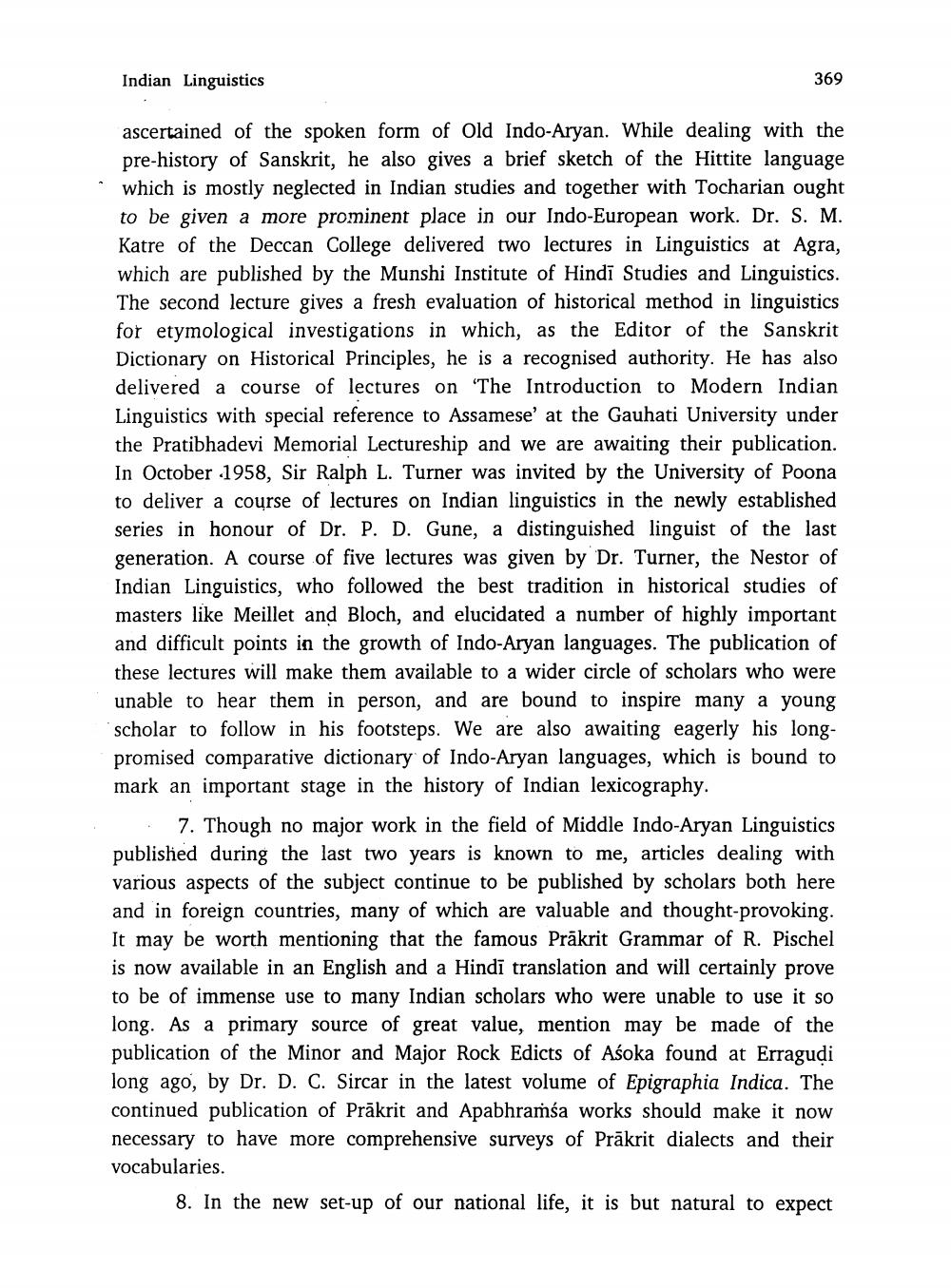________________
Indian Linguistics
369
ascertained of the spoken form of Old Indo-Aryan. While dealing with the pre-history of Sanskrit, he also gives a brief sketch of the Hittite language which is mostly neglected in Indian studies and together with Tocharian ought to be given a more prominent place in our Indo-European work. Dr. S. M. Katre of the Deccan College delivered two lectures in Linguistics at Agra, which are published by the Munshi Institute of Hindi Studies and Linguistics. The second lecture gives a fresh evaluation of historical method in linguistics for etymological investigations in which, as the Editor of the Sanskrit Dictionary on Historical Principles, he is a recognised authority. He has also delivered a course of lectures on 'The Introduction to Modern Indian Linguistics with special reference to Assamese' at the Gauhati University under the Pratibhadevi Memorial Lectureship and we are awaiting their publication. In October 1958, Sir Ralph L. Turner was invited by the University of Poona to deliver a course of lectures on Indian linguistics in the newly established series in honour of Dr. P. D. Gune, a distinguished linguist of the last generation. A course of five lectures was given by Dr. Turner, the Nestor of Indian Linguistics, who followed the best tradition in historical studies of masters like Meillet and Bloch, and elucidated a number of highly important and difficult points in the growth of Indo-Aryan languages. The publication of these lectures will make them available to a wider circle of scholars who were unable to hear them in person, and are bound to inspire many a young scholar to follow in his footsteps. We are also awaiting eagerly his longpromised comparative dictionary of Indo-Aryan languages, which is bound to mark an important stage in the history of Indian lexicography.
7. Though no major work in the field of Middle Indo-Aryan Linguistics published during the last two years is known to me, articles dealing with various aspects of the subject continue to be published by scholars both here and in foreign countries, many of which are valuable and thought-provoking. It may be worth mentioning that the famous Prākrit Grammar of R. Pischel is now available in an English and a Hindi translation and will certainly prove to be of immense use to many Indian scholars who were unable to use it so long. As a primary source of great value, mention may be made of the publication of the Minor and Major Rock Edicts of Asoka found at Erragudi long ago, by Dr. D. C. Sircar in the latest volume of Epigraphia Indica. The continued publication of Prākrit and Apabhramsa works should make it now necessary to have more comprehensive surveys of Prākrit dialects and their vocabularies.
8. In the new set-up of our national life, it is but natural to expect




